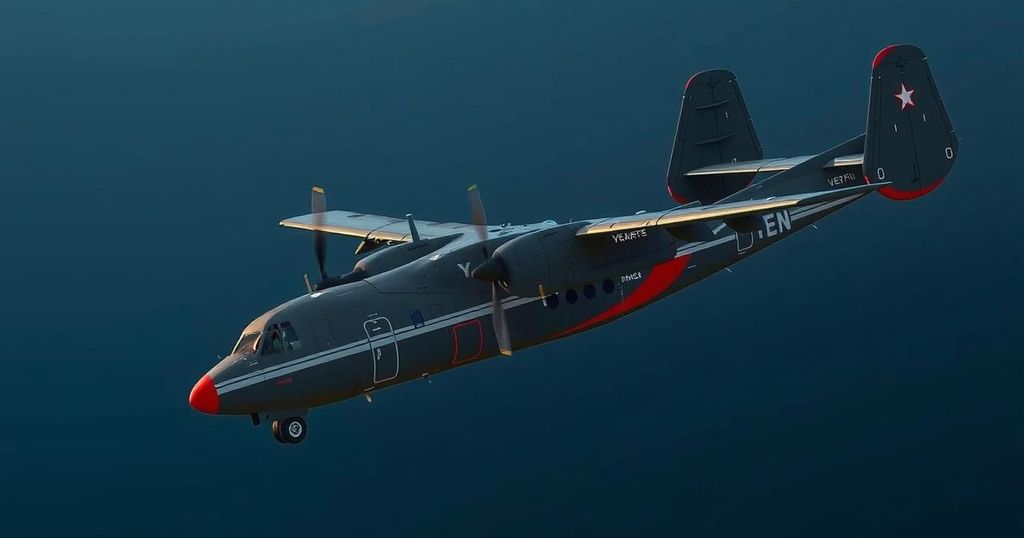Significant Observations of the Y-9LG ELINT Aircraft at Exercise Falcon Strike in Thailand
The recent participation of the Y-9LG Electronic Intelligence (ELINT) aircraft in Exercise Falcon Strike at the Royal Thai Air Force base in Udon Thani, Thailand, has garnered attention within military aviation circles. This exercise, which occurred from August 18 to 29, 2023, involved 13 aircraft from various branches of China’s People’s Liberation Army (PLA).
The Y-9LG, also known as High New 13, has been operational in the PLA Air Force (PLAAF) since its service entry in 2022, following its development that began in 2017. Notably, the aircraft observed during the exercise featured low-visibility markings and was designated with the serial number 30211, indicating its affiliation with the 20th Special Division of the PLAAF.
Based on the Shaanxi Y-9 turboprop airlifter, the Y-9LG is distinguished by its notable “balance beam” antenna, reminiscent of the Saab Erieye airborne radar system and China’s KJ-200 Airborne Early Warning (AEW) aircraft. Furthermore, it is equipped with several distinctive fairings tailored for its specific mission, including a Satellite Communications (SATCOM) dome, side-looking Signal Intelligence (SIGINT) antennas, and Electronic Support Measures (ESM) antennas located on the wingtips and at the top of the vertical stabilizer.
In addition to the Y-9LG, other aircraft that participated in the exercise included Shenyang J-11 interceptors, comprising both a single-seat variant (J-11B) and a twin-seat variant (J-11BS), both marked with PLA Navy Air Force (PLANAF) insignia. Furthermore, two Xi’an JH-7 fighter bombers represented PLANAF forces, displaying serial numbers indicative of their affiliation with the 9th Naval Aviation Brigade, thus suggesting an integration of PLANAF and PLAAF units that has been ongoing since 2022.
Further contributions to the exercise included six PLAAF J-10 fighter jets, a Shaanxi KJ-500 AEW aircraft, and a Mil Mi-171 transport helicopter from the PLA. On the other hand, the Royal Thai Air Force showcased their capabilities through Saab JAS-39 Gripen multi-role fighters, a Saab 340 AEW aircraft, and Dassault/Dornier Alpha Jet light combat aircraft. This iteration of Exercise Falcon Strike marks its seventh occurrence since its establishment in 2015.
Despite Thailand’s status as a treaty ally of the United States, its defense relationships with China have strengthened in recent years, resulting in military purchases such as Chinese tanks and amphibious ships as well as ongoing discussions regarding submarine acquisitions.
Understanding the Y-9LG and its roles generates interest among military analysts. As noted by NAVAL NEWS contributor Alex Luck, while the operational capabilities of the Y-9LG remain somewhat obscure, its design suggests functions centered on electronic warfare, potentially serving as a jammer platform employing advanced Active Electronically Scanned Array (AESA) technology. This aligns with global trends where militaries are keenly focused on enhancing electronic warfare capabilities across modern aerial platforms. Furthermore, it appears that the development of the Y-9LG builds upon the capabilities of previous PLA systems, such as the KJ-500, which itself integrates ELINT technologies.
In conclusion, the presence of the Y-9LG in Thailand during Exercise Falcon Strike highlights not only China’s growing technological capabilities in the realm of electronic warfare but also the evolving dynamics of international military partnerships and exercises. As countries navigate their defense alignments, the implications of such developments warrant continued observation and analysis.








Post Comment